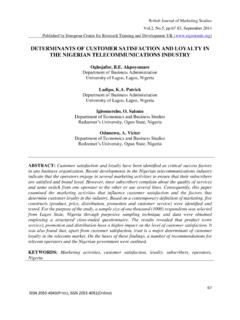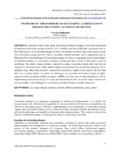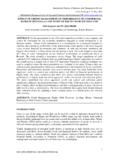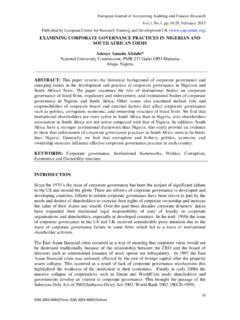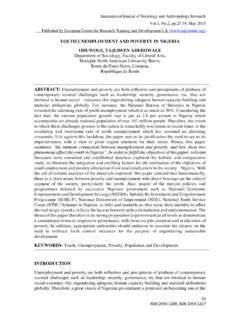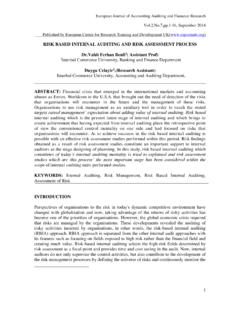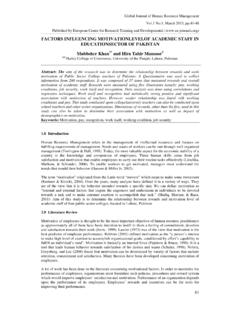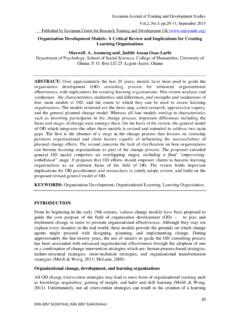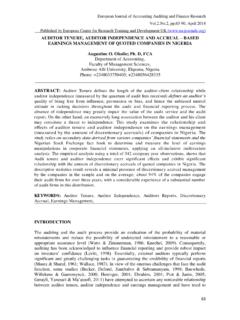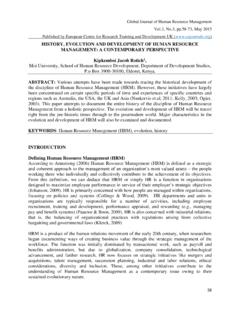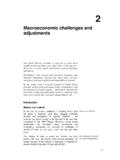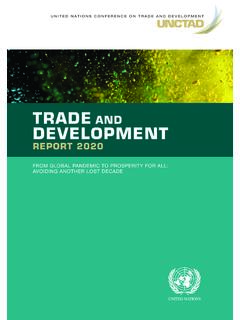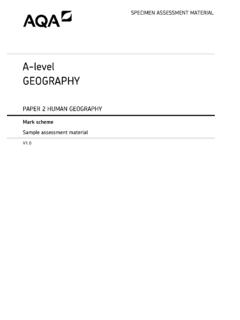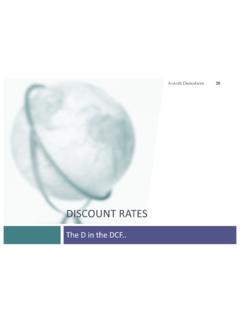Transcription of INTERNATIONAL TRADE: A MECHANISM FOR EMERGING …
1 INTERNATIONAL Journal of Development and EMERGING economies Vol. 2, , pp. 24-32, December 2014 Published by European Centre for Research Training and Development UK ( ) 24 ISSN 2055-608X(Print), ISSN 2055-6098(Online) INTERNATIONAL TRADE: A MECHANISM FOR EMERGING market economies Danjuma Naisla Hassan Department of General Studies Nasarawa state polytechnic lafia. Nasarawa state of Nigeria Habakuk Aboki Department of Pre-ND, Nasarawa state polytechnic lafia. Nasarawa state of Nigeria. And Amos Anyesha Audu Department of Social sciences (business management unit) school of basic and remedial studies, Nasarawa state polytechnic lafia. Nasarawa state of Nigeria. ABSTRACT: INTERNATIONAL trade has contributed greatly to the global economic system. EMERGING market economies (EME) was a result of INTERNATIONAL trade activities.
2 The INTERNATIONAL trade programme has encouraged many countries in the world to adopt INTERNATIONAL economic policies that promote greater trade and investment. BRICs acronym implies Brazil, Russia, India and China represent the leaders of these EMERGING market economies . INTERNATIONAL trade activities underpin the growth and development of these countries. This study brings round the facts and figures on the activities of INTERNATIONAL trade and how its fostered growth and development of the EMERGING market economies . Many theories of INTERNATIONAL trade were used to underpin these activities of the trade. These include Heckscher-Ohlin model, Rechardian model and Gravity model of INTERNATIONAL trade. The researchers presents some criticisms accompany by these beautiful roles play by INTERNATIONAL trade to EMERGING market economies and useful recommendations were provided for these economies .
3 KEYWORDS: EMERGING market economies , INTERNATIONAL trade, Dumping, investment, Global economic system and theories. INTRODUCTION The world policy of INTERNATIONAL trade has contributed immensely to the growth and development of many countries of the world. Research has shown that INTERNATIONAL trade has become more global activities today in the world than at any time in modern history, (Thomson 2002). This program has encouraged many countries in the world to adopt INTERNATIONAL economic policies that promote greater trade and investment. Countries that engage in INTERNATIONAL trade usually operate under one umbrella or the other, such as, multilateral, bilateral, as well as regional agreement. However, the General Agreement on Trade and Tariffs (GATT) which was replaced by the World Trade Organisation (WTO) in 1993 (Cooper 2012) is the organisation that controls all registered INTERNATIONAL trade members nations.
4 The EMERGING market economies who are registered members are also part of this organisation. INTERNATIONAL Journal of Development and EMERGING economies Vol. 2, , pp. 24-32, December 2014 Published by European Centre for Research Training and Development UK ( ) 25 ISSN 2055-608X(Print), ISSN 2055-6098(Online) EMERGING market economies , which are classified as BRICs, implies Brazil, Russia, India and China are the leaders of these economies . These countries had the support of INTERNATIONAL trade activities which underpins its areas of growth and development. This research will critically evaluate the roles of INTERNATIONAL trade in EMERGING market economies . It will be inclined to explain how INTERNATIONAL trade has contributed to the growth and development of EMERGING market economies . The organisation of this research work is as follows: the Introduction, which will briefly explain how INTERNATIONAL trade worked in members countries; the theoretical framework of INTERNATIONAL trade which will give a brief explanation of some theories such as the Recardian theory, the Heckscher-Ohlin theory and the Gravity theory of INTERNATIONAL trade.
5 The concepts of INTERNATIONAL trade and EMERGING market economies will also be discussed. The next section will give a critical evaluation of the roles of INTERNATIONAL trade in EMERGING market economies . These roles will include: provision of additional capital to the EMERGING market economies , fostering multilateral, bilateral and regional trade agreements among members countries, improvement of economic performance and raising of overall income of members countries, it help in marketing of natural endowments, provision of input and raw materials for agricultural and manufactory sectors and enable the developing countries to borrow funds at very low interest rates. These roles will be supported with much scholarly research work which will be vividly explained for clarity of the readers.
6 In addition, the research will be accompanied by some criticisms of the role of INTERNATIONAL trade in the EMERGING countries. Finally, a conclusion and some useful recommendations will be provided for the EMERGING market economies . THEORETICAL FRAMEWORK OF INTERNATIONAL TRADE There are many theories of INTERNATIONAL trade given by different scholars. Among these theories include;Recardian model- krugman and obstfeld (2009, p22) states that, this model is developed on the theory of comparative advantage. According to this model, countries involved in trade, specialize in producing the products in which they have comparative advantage. For instance if country A and B, are involve in production of Y clothes and X cars, and A produce more quantity of clothes in a day at lower cost ( ) and less number of cars at high cost ( ) in a day, while B produce less quantity of clothes at high cost ( ) in a day and more number of cars at lower cost ( ) in a day.
7 Comparatively A should produce quantities of clothes while B should produce number cars because of the advantage they both have over each other on the production cost. Heckscher-Ohlin model- this model places emphasise on endowments factors of production as the basis for INTERNATIONAL trade. As per this theory, countries will specialize in and export those products which make use of the domestically abundant factors of production more intensively than those factors which are not quite available in the home country (Blaug 2006). This is mostly base on the availability of abundant factor of production. A country should export only that which it has in abundant and import that which it does not have in abundant. Gravity model- this model provides empirical explanations of INTERNATIONAL trade. According to the model, economic sizes and distance between nations are the primary factors that determine the pattern of INTERNATIONAL trade.
8 The model resembles the Newtonian law of gravity which also considers distance and physical size between two objects (Krugman and INTERNATIONAL Journal of Development and EMERGING economies Vol. 2, , pp. 24-32, December 2014 Published by European Centre for Research Training and Development UK ( ) 26 ISSN 2055-608X(Print), ISSN 2055-6098(Online) Obstfeld 2009, Nello 2009).The model stated that INTERNATIONAL trade is determined by the volume of trade between two countries to include the size of the two countries GDPs and the distance between the countries, without specifically assuming that trade is proportional to the product of the two GDPs and inversely proportional to distance. That is, the value of trade between any two countries is proportional to the product of the two countries GDPs which diminishes with the distance between the two countries.
9 CONCEPTS OF INTERNATIONAL TRADE AND EMERGING market economies INTERNATIONAL trade INTERNATIONAL trade refers to as the transfer of goods and services which include capital goods from one country to another. This definition was concurring by Economics Concepts (2012) who defined it as trade across INTERNATIONAL boundaries. In most countries, such trade represents a significant share of gross domestic product (GDP). While INTERNATIONAL trade has been present all the way through a large amount of history, its economic, social and political importance has been on the rise in recent centuries. Therefore, without INTERNATIONAL trade, nations would be limited to the goods and services produced within their own borders. However, Economics Concept (2012) adds that, the difference between INTERNATIONAL trade and domestic trade is that, this type of trade is more costly than domestic trade.
10 This is because the trade across INTERNATIONAL border require other charges or costs such as tariffs, and other costs associated with country differences such as language, legal system or culture are also incurred. Factors of production such as capital and labour typically move more freely within a country than across countries. Therefore, these determinants really give clear polarization of the two concepts to business individual and organisations. EMERGING market economies There are so many definitions of EMERGING market economies (EME) given by different scholars. Economy Watch (2010) defined EMERGING market economies as economies with low per capital income. The EME countries constitute approximately 80% of the global population as well as 20% of the world economies .
